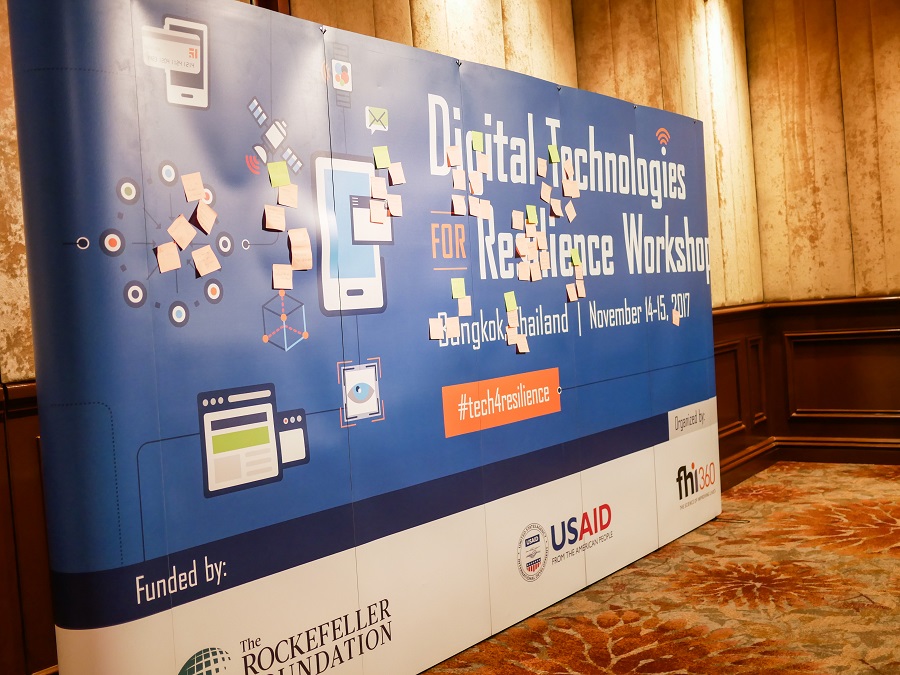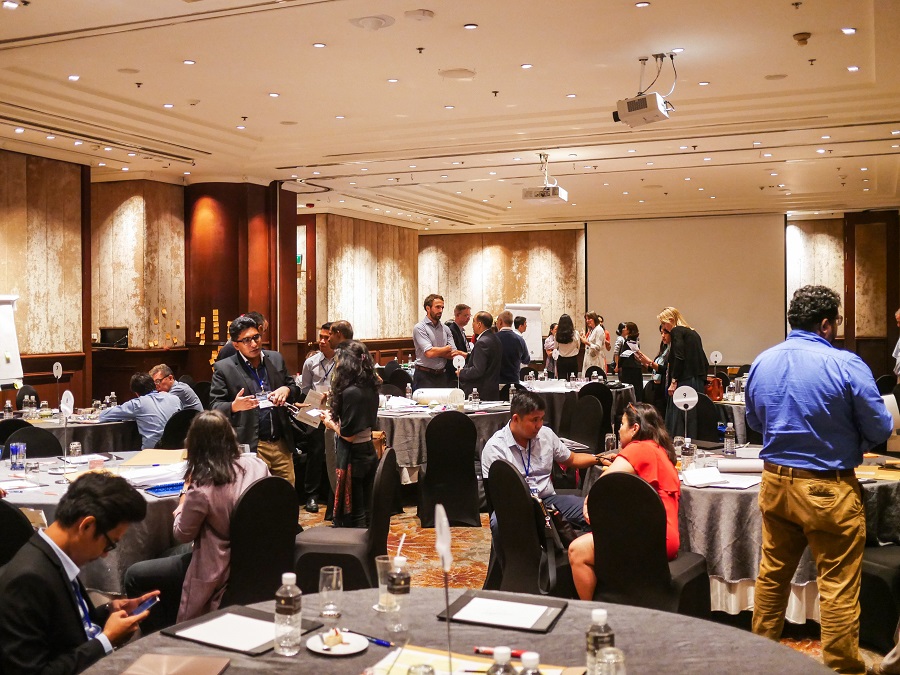Let us know what type of content you'd like to see more of. Fill out our three question survey.
Tailored Technology Enhances Resilience Programming
Nov 30, 2017
FHI360 recently hosted its annual Technology for Resilience workshop in Bangkok. In doing so, conference organizers created an opportunity for technologists and development practitioners to learn from active technology projects that promote community resilience, and work together on innovative solutions to what are often seen as intractable problems. In this post, I’ll look at some of the technologies showcased during the conference. But before doing so, let’s define resilience.

What Does Resilience Mean?
The conference used Rockefeller Foundation’s definition of resilience as the cornerstone of the conference:
Resilience is the capacity of individuals, communities, and systems to survive, adapt, and grow in the face of stress and shocks, and even transform when conditions require it.
Supporting a resilience project, therefore, means promoting tools or institutions that survive shocks such as natural disasters, the outbreak of disease, or even conflict. A 2013 USAID publication, The Resilience Agenda: Measuring Resilience in USAID, provides a similarly worded definition of resilience, and highlights three objectives—with the overarching goal of increasing the resilience of chronically vulnerable populations.
-
Objective 1: Increased Sustainable Economic Well Being
-
Objective 2: Strengthened Institutions and Governance
-
Objective 3: Improved Health and Nutrition Status
Let’s look at some of the technologies highlighted during the conference, and how they support these objectives.

Increased Sustainable Economic Well-Being
The first objective highlighted by USAID’s resilience work is that of economic development. The predominant economic development technologies showcased at the conference fell into the realm of agriculture.
Telenor Pakistan provided lessons from its work using robo-calls, text, and audio messages to reach farmers and help prevent harvest loss in the face of a changing climate. Their work has helped farmers increase income, reduce water and pesticide usage, and reduce post-harvest losses.
A second agriculture technology company, Colorado-based aWhere, leverage multiple sources of climate data to create crop-growth forecast models. And through their API, they enable farmers to make educated decisions on what crops are most likely to thrive on a given year.
Strengthened Institutions and Governance
The second objective is that of good governance, which includes equitable management of natural and land resources, as well as effective coordination between local and national governments during times of emergency.
At the conference, the Cadasta Foundation introduced its land tenure technology, which aims to support the development of digitally documented land records, and in turn, land rights. Cadasta argues that an estimated 70 percent of the property in emerging economies is undocumented, and that an estimated 25 percent of the world urban population live in towns with no record of legal ownership. Using a combination of aerial imagery collection, including satellite, drone, and GPS-based spatial collection technologies, Cadasta helps communities and institutions gather data on land, and manage data on their online mapping platform. This technology arguably also supports both economic well-being and governance issues.
With coordination in mind, the Humanitarian OpenStreetMap Team (HOT) and crowdsourcing platform PetaBencana presented their technologies, which include the development of community-based maps for common situational awareness during disaster, and then the use of crowdsourced and government reporting on emergency events to improve response operations. Also present was the Nepal Flying Labs team, which used drones to collect data on damaged infrastructure after the 2015 earthquake for the purposes of search and rescue and cargo delivery.
Improved Health and Nutrition
The last pillar highlighted in the USAID report is that of improved access to health and nutrition, which encompasses everything from chronic disease prevention, to maternal and child health, to care for water and sanitation.
Working to achieve SDG 6.1, “universal and equitable access to safe and affordable drinking water for all,” the company SweetSense develops affordable “sensors as a service” to improve water service delivery. Citing a 2013 Oxford University study on handpumps, it makes the case that GSM-enabled ‘smart handpumps,’ or ones that create a digital signal when they malfunction, improve the speed of maintenance, and in turn, increase access to a safe water supply. As a company, it creates the mobile sensors, dashboards, and operations support to improve city-level water pump functionality.
Multiple health-based technologies were showcased during the conference, including Medic Mobile, and BBC Media Actions Mobile Academy. The Medic Mobile toolkit is a set of mobile-first technologies for frontline care decision support, enabling health care workers to prioritize home visits, schedule follow-ups, message patients, and analyze data across patients and over time. Offering insights into best practices for scaling technologies to wide populations, BBC Media Action introduced Kilkari, its free maternal messaging service, which aims to increase the capacity of pregnant women, new mothers, and their families to adopt healthy behaviors through increased knowledge. It also provided an overview of its interactive voice response (IVR)-based mobile academy, which aims to improve the quality of engagement between community health workers and their clients through access to life-saving preventative behavior.
Also noteworthy was the manufacturing work of Field Ready, a company that uses 3D printing to develop supplies needed at the front lines of relief and recovery operations, as well as in support of health, water, and sanitation initiatives. Arguably their work also supports economic development, providing innovations in community-based manufacturing.
Takeaways
Coming away from the conference, I was impressed with the number of projects taking place across the Asia Pacific region that are improving the quality of life through innovations in technology. And in many ways, the simplest projects were the ones with the greatest impact.
We look forward to following each of these groups as they continue to scale their projects, and support the development of resilient communities around the globe.